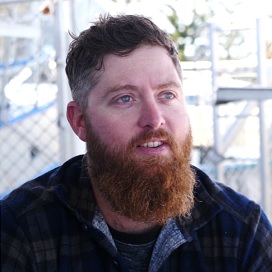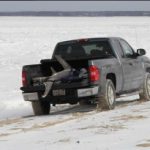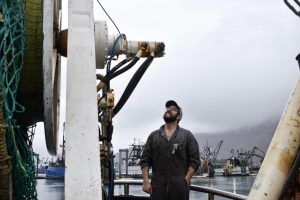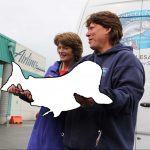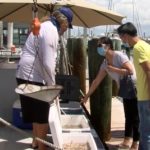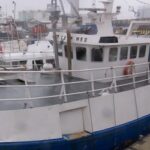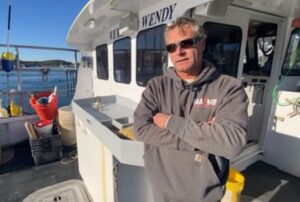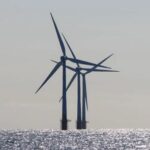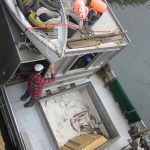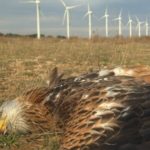Tag Archives: commercial fishing
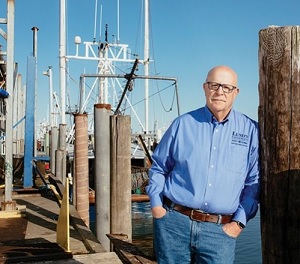
New Jersey’s Commercial Fishing Industry Struggles to Stay Afloat
In the wake of the pandemic, the industry—the fifth largest in the country—has been in rough waters. Will July and August bring relief? Atlantic Cape Fisheries, of which Sam Martin is chief operating officer, is a large commercial fishery as well as New Jersey’s largest producer of farmed oysters. “Last year we sold 2.5 million oysters, and we planned to sell 5 million this year, but sales so far are down about 80 percent compared to last year.” The bottleneck that Martin spoke of has throttled not only oystering, but New Jersey’s entire commercial fishing industry, “When I tell my boats to go fishing, I tell them, ‘Don’t bring in a lot,’” says David Tauro, general manager of the docks at the Belford Seafood Co-Op Belford, founded in 1953, is the smallest of New Jersey’s six commercial fisheries, but its pain is shared by the larger ones, such as Viking Village in Barnegat Light and Lund’s Fisheries in the state’s largest commercial fishing port, Cape May. >click to read< 17:53
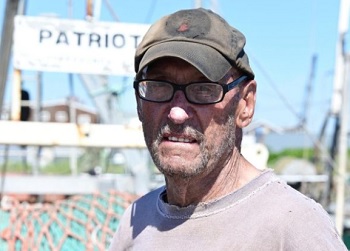
Long Island Coronavirus Hangover: Fishermen’s business remains in the doldrums even as restaurants reopen
While many local fishermen sell to local retailers, a steady local business even through the pandemic, the lion’s share of local fish go to companies that distribute to restaurants throughout the region and across the country. Three months of lockdowns over the coronavirus has backed up the market for the products, leaving warehouses for local frozen fish such as squid fully stocked, while drastically reducing demand for local clams and oysters..,, The summer is normally a prime time for fishing trawlers that harvest squid, said Greenport commercial fisherman Mark Phillips, but the market has been backed up by months of shutdowns and a closure of some export markets, including to China. Phillips said he was hopeful the start of restaurant reopening increases demand for squid, his primary fishery right now. >click to read< 07:47
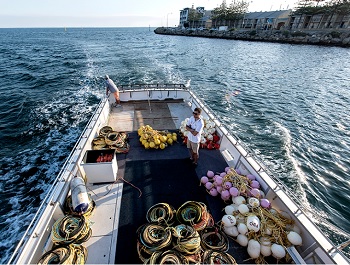
Can we really break the China habit?
China is a hard habit to break.Even after its early mishandling of the coronavirus disrupted the country’s ability to make and buy the world’s products, further exposing the faults of its authoritarian system and leading it to ratchet up its propaganda war, China’s economic power makes it the last best hope for avoiding a protracted global downturn.“When this all started, we were thinking, Where else can we go?” said Fedele Camarda, a third-generation lobster fisherman in western Australia, which sends most of its catch to China. “Then the rest of the world was also compromised by the coronavirus, and China is the one getting back on its feet.”“Although they’re just one market,” he added, “they’re one very big market.” >click to read< 10:56
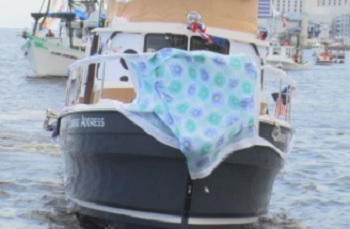
“This community is very resilient” – Coronavirus doesn’t stop 91st annual Blessing of the Fleet in Biloxi
It’s going to take more than a tropical storm and a worldwide pandemic to stop the Blessing of the Fleet in Biloxi. On Sunday, the 91st annual event took place with a few changes, including one that brought back a tradition to the tradition. Normally, the holy water comes from a much bigger boat, but this year because of COVID-19 concerns, it was launched from the stern of the Terri Lynn – the shrimp boat of this year’s Shrimp King Eddie Rhodes. “It’s a big honor to have everybody on it,” he said. “This doesn’t usually happen.” >click to read< 08:29
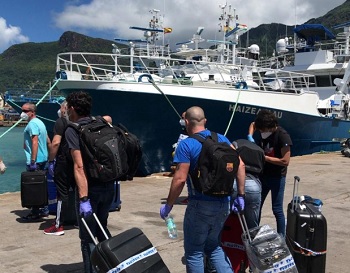
Stranded at Sea in The Time of Coronavirus
Spanish fisherman Josu Bilbao boarded a Qatar Airways flight headed for the Seychelles in January, just as he had done for the past 15 years. Ahead of him, four uninterrupted months of hauling tuna out of the glistening Indian Ocean. As it turned out, catching the fish was the least of the problems for the 56-year-old captain of Albatun Tres, one of the world’s largest tuna fishing boats. The coronavirus then swept the world, countries shut borders, planes stopped flying and Spain became one of the countries worst hit by the virus. Bilbao and his crew were stuck. As the Indian Ocean fleet shift was extended ship owners tried to figure out a way to get workers home. Aboard the ship avoiding infection became the priority. >click to read< 09:43
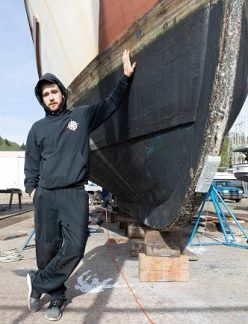
Fishermen’s Superstition’s: No bananas! No Whistling! But above all, it’s bad luck to be superstitious!
Luke Whittaker set out to learn whether there are superstitions that live on among local fishermen. Here’s what he heard. Jerry Matzen III, commercial fishermen “Hang your coffee cup mouth towards the stern so you don’t sink. And no whistling in the wheelhouse or cabin — otherwise you’ll whistle up a storm, like we are having today. I learned the coffee cup one from Kerry Suomela Sr. when I worked on the F/V Southern Cross and it always stuck with me.” Tim Teall, commercial fishermen “Well, to begin with, you never want to paint your boat green because it’ll beach itself in a storm. Never set a coffee cup or a bucket on the boat upside down — the boat will roll over! Don’t whistle in the wheelhouse, because it’ll make it get windy out. But above all, it’s bad luck to be superstitious!” >9 photos, click to read<10:41
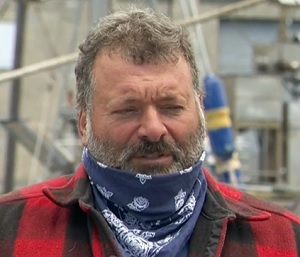
Fisherman’s Wharf: Restaurant threatens commercial fishing operation’s survival over a parking lot conflict
The parking area at Pier 47 could be used for al fresco dining as soon as next week but that space is where Giuseppe Pennisi, of Pioneer Seafoods, has been selling fresh-caught fish right off his boat for years. Now, the Port of San Francisco has ordered him to stop. “They said our business was causing problems for Scoma‘s but there’s no one even down here anymore except for people buying a few fish,” Pennisi said. Scoma’s owner Tom Creeden says they’ve submitted plans to Port of San Francisco officials to use the parking space for outdoor dining. Pioneer Seafoods will have to shut down its operations by June 15 after being given less than five days notice. It would also be a blow to Glide Memorial Church in San Francisco, which receives 3,000 pounds of fish from Pennisi every two weeks to feed the homeless. >video, click to read< 08:37

Golden and Graves introduce bi-partisan legislation to make disaster relief funds available to fishermen
In a bipartisan effort, Rep. Jared Golden (D-Maine) and Rep. Garret Graves (R-Louisiana) on Thursday introduced legislation to make additional disaster relief available to thousands of fishermen whose businesses are harmed by a pandemic. The legislation would amend the Magnuson-Stevens Fishery Conservation Act to allow fisheries disasters to be declared due to pandemic, such as Coronavirus. My bipartisan bill with Congressman Graves would make pandemics an allowable reason to declare a fisheries disaster, opening up a process to direct federal relief funds to affected fishing communities. >click to read< 11:55
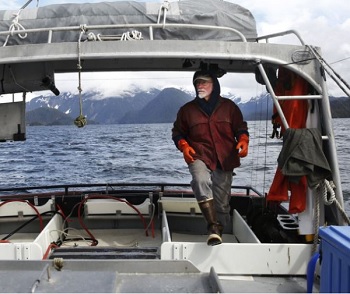
A win for Alaska trollers – Judge denied request for injunction to keep season closed
Magistrate Judge Michelle Peterson, of the US District Court of Western Washington, ruled on Tuesday (6-9-20) that an injunction petition filed by a Washington state environmental organization to protect killer whales circumvents established fisheries law. During oral arguments before her in May (5-28-20), Judge Peterson put hard questions to counsel for the Wild Fish Conservancy about whether the federal court had jurisdiction over the case, when the matter had not been tested before the Alaska Board of Fisheries, or the National Marine Fisheries Service — organizations which have regulated fisheries for the last four decades under the overall umbrella of the Magnuson-Stevens Act. So Judge Peterson’s ruling wasn’t unexpected. Nevertheless Kurt Beardslee, executive director of the Conservancy, says he’s disappointed. >click to read< 08:14
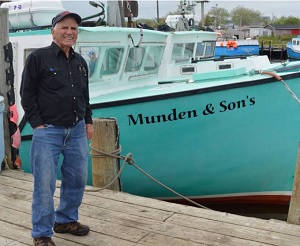
Glace Bay Fisherman celebrates 80 consecutive years of working on the water
In a year that has been anything but normal, Jim Munden continues to be a figure of both consistency and longevity on the Glace Bay wharf. The longtime fisherman, who will celebrate his 89th birthday this summer, still plays an active role in the former coal mining community’s other big industry. And this year marks the 80th consecutive year that Munden has taken to the coastal waters off Cape Breton to ply the trade he first experienced as a nine-year-old boy.,,, When asked about the beginnings of his lifelong career, Munden likes to mention that it all started in a foreign country. “I was born in Newfoundland back in 1931 when it was still part of England,” he recalls.,, they moved to Glace Bay when I was a boy.” That’s where he started fishing. And at his side the entire time has been Dot (Billard), his childhood sweetheart, wife of almost 70 years and mother of their six children. >click to read< 10:54

This is Big: President Donald Trump plans to open Northeast Canyons and Seamounts Marine National Monument to commercial fishing
President Donald Trump is expected to sign a proclamation on Friday that would open up a conservation area in the Atlantic Ocean to commercial fishing, according to two sources familiar with the plan. The proclamation would allow commercial fishing to resume in the Northeast Canyons and Seamounts Marine National Monument off the coast of New England, a sanctuary created in 2016 during the last year of the Obama administration. It is also expected to cancel the planned phase out of red crab and lobster fisheries that had been ordered in the 2016 designation, according to the sources. Trump could sign the proclamation during a meeting with commercial fishermen in Maine on Friday,,, >click to read< 12:58
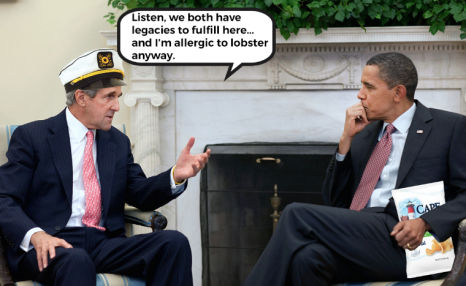 March 27, 2018, Fishermen suit against Atlantic marine monument moves ahead – The fishing groups sued to challenge the creation of the Northeast Canyons and Seamounts Marine National Monument created by President Barack Obama in 2016. It’s a 5,000-square-mile area off of New England that contains fragile deep sea corals and vulnerable species of marine life such as right whales. The fishermen’s lawsuit had been put on hold by a review of national monuments ordered by President Donald Trump’s administration in April 2017. But a coalition of environmental groups is also intervening in the case in an attempt to keep the monument area preserved. >click to read<
March 27, 2018, Fishermen suit against Atlantic marine monument moves ahead – The fishing groups sued to challenge the creation of the Northeast Canyons and Seamounts Marine National Monument created by President Barack Obama in 2016. It’s a 5,000-square-mile area off of New England that contains fragile deep sea corals and vulnerable species of marine life such as right whales. The fishermen’s lawsuit had been put on hold by a review of national monuments ordered by President Donald Trump’s administration in April 2017. But a coalition of environmental groups is also intervening in the case in an attempt to keep the monument area preserved. >click to read<

Alaska’s Coronavirus plans for fishing communities are now being put to the test
In a normal fishing season, Dan Martin would fly straight from the Pacific Northwest to the Aleutian Islands, where his pollock trawler, the Commodore, would be waiting for him to take the wheel. But this year, the veteran skipper is stepping onboard in Seattle, where he, four crew and two federal fisheries observers are taking COVID-19 tests and hoisting a quarantine flag. Then they’ll squeeze onto the vessel for a week-long voyage to Alaska’s biggest fishing port, Dutch Harbor in the Aleutian Islands. “We might have to eat in shifts,” Martin quipped. “Because I don’t know that we can fit that many people at our galley table.” >click to read< 09:41

Trump to to discuss commercial fishing while in Maine
President Donald Trump will hold a roundtable discussion with parties involved in the commercial fishing industry during his visit to Maine on Friday, according to a White House official. The president is slated to come to the Pine Tree State to visit the Puritan Medical Products facility in Guilford, which manufactures medical swabs used in coronavirus testing. The president is expected to discuss regulations and how to expand economic opportunities for the commercial fishing industry, according to the official. >click to read< 18:12
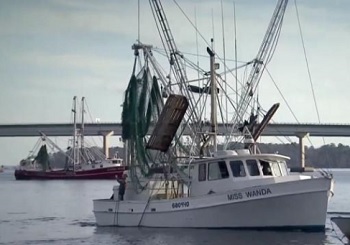
A group threatens a lawsuit over NC shrimping rules
A group pushing for changes to North Carolina’s commercial fishing rules sent formal notice last week that it plans to sue the state and one of the largest shrimping companies on the coast. The N.C. Coastal Fisheries Reform Group said that after “over a decade of unsuccessful attempts to engage in meaningful fisheries management reform dialog” with multiple governors, lawmakers and state officials it was filing a notice of claim under the Federal Clean Water Act. That starts a 60-day clock ahead of a lawsuit. The group said in a news release that, with another shrimping season approaching, time is of the essence. >click to read< 12:00

The future of fish is frozen: How the Massachusetts seafood industry is adapting to Coronavirus
As restaurants closed, local seafood distributors needed to find a way to sell their product. So they turned to their freezer. Jared Auerbach first saw the effects of the coronavirus pandemic in early January, when seafood orders from Boston’s Chinatown — and Chinatowns across the country — slowly stopped coming in. At first, the founder of Red’s Best, a Boston-based seafood distributor, wasn’t too worried. “The second week of March, we were down about 20 percent,” On March 17, restaurants in Mass. were ordered to shutdown, and Auerbach, who founded Red’s Best in 2008, saw his business fall out from under him “What’s our contingency plan?” Across the country, seafood purveyors are all asking the same question. >click to read< 13:25
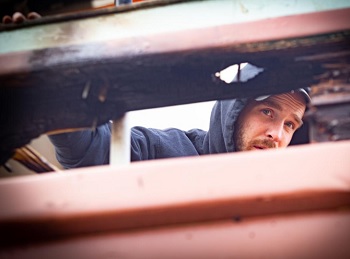
Boat fire sends fishermen scrambling
His boat catching fire wasn’t the hot start to the commercial fishing season Jerry Matzen III was hoping for, but the 34-year-old Ilwaco fisherman was glad his boat was saved from the flames to fish another day. Matzen’s boat was already billowing smoke from the port side when Ilwaco Volunteer Fire Department arrived at about 8 a.m. Friday, May 1 to the Ilwaco Boatyard. Within minutes the fire crew doused the flames and cut out a charred chunk of wood siding to prevent the fire from spreading further. The burnt section was about 3 feet long and a foot tall. Fortunately it was above the waterline and in a straight spot before the curve of the stern, making for a less complicated repair with no structural damage, Matzen said. Matzen bought the boat in early January, his first as the sole owner. “It’s where my crab money went, to starting my own business.” 6 photos, >click to read< 17:04
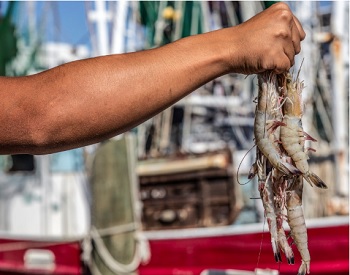
Mississippi’s Coast shrimpers cling to legacy through the industry’s choppy waters
Danny Ross, an Ocean Springs shrimper, has been on a boat for as long as he could walk. He remembers driving the family vessel as a kid, having to climb onto the dashboard to see over the steering wheel. “Two spokes to the left,” his dad would direct. He remembers, back on land, getting bad grades in art class because he would only draw one thing. “I’d draw a pretty good boat too,” he said. “Me and my brothers were always on the boat. The rigging, the pipes – that was our jungle gym. And our swimming pool? The boat would be shrimping and we’d be diving off the bow, catching ropes on the outrivers.” Ross, 55, recently tied up his boat after a disappointing season that saw fresh water kill 56 percent of Mississippi’s shrimp. The plummeting price of shrimp has made it difficult for Ross to find crew members, and instead he’s gone to work on another captain’s boat. After following five generations of fishermen into the business, he’s worried about the direction the industry is headed in. photos, >click to read<. This is a two part series, >click to read Part 1< , with photo gallery 08:09
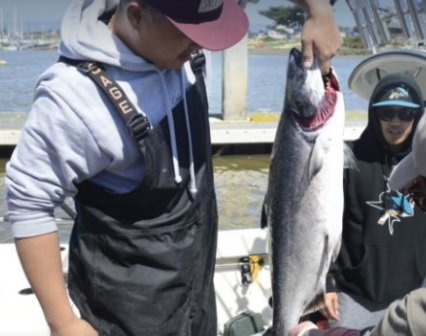
Monterey Bay fishermen looking forward to salmon season
There’s a frenzied pace to life in Monterey Bay’s fishing ports this week. Today, May 1, fishermen and women in Santa Cruz, Moss Landing and Monterey began to harvest the iconic California king salmon — sustainable, nutritious and the economic backbone of local working waterfronts during summer months. Wild king salmon and summer barbeques are as steeped in California culture as fresh, in-season Dungeness crab for Thanksgiving and Christmas dinner, While a few winters of healthy rainfall and strong management plans have been a boon to California salmon populations running to the Sacramento River, the impacts of the COVID-19 pandemic have wreaked havoc on local seafood supply chains. We fishermen and women can catch the fish, but the question is: Who will buy them? >click to read< 08:11
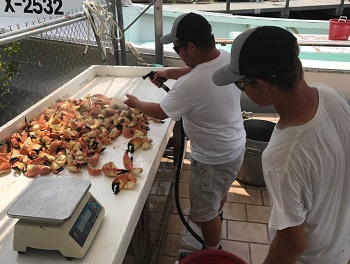
First a hurricane, then an algae bloom. Now Keys fishermen try to weather the coronavirus pandemic
This day’s haul was a good catch — hundreds of claws ranging in size from large to “colossal.” But this was among the last trips the crew of the Risky Business II will make this season to harvest the Florida delicacy. With restaurants mostly closed due to the coronavirus pandemic, Piton and most other Keys commercial anglers are calling it an early season, which is scheduled to end May 10. Piton, 54, has been in the lobster and crab business for nearly 40 years and is among the most successful operators in the Keys. He said he’ll be able to weather the pandemic, but he feels for the many other commercial anglers who won’t. video, >click to read< 10:37
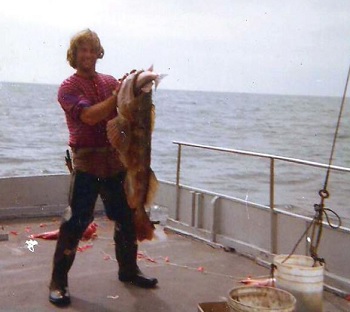
Harry Graham Goes Fishing
Harry Graham was a local surfer and fisherman. I only briefly got to know him near the end of his life. We did a page together about surfing and his friend Tom Linker, but he also gave me a bunch of photos of his commercial fishing days. Unfortunately, he passed away before I got much info on these. So I asked a few friends, a got a little info, and found some info in my notes. I think these are mostly from the early 80s. So here are some historic photos of some legendary characters doing their thing in an earlier time. By Tom Modugno >click to read< 16:02

Debut novel set in Bristol Bay delivers generations of women’s storytelling
Mia Heavener, now living in Anchorage, grew up fishing in Bristol Bay, where she absorbed stories her mother and other women told between tides and over tea. Her lovely debut novel set in a village near Dillingham, “Under Nushagak Bluff,” draws upon those stories and her own knowledge of the region, its history, its Yup’ik people, and the fishermen and cannery workers who came and went with the salmon runs. It is a compelling narrative, rich in its evocations of a time and place largely unrepresented in our literature — and a welcome addition to it. The novel begins with a voice. Someone — it’s a while before readers will figure out who it belongs to — is sitting in a skiff on a sandbar, waiting for the tide to come in. “My girl, I’m sorry,” she says. “I’ll start with that.” And she begins to talk, with a story “that could be told by the shape of the beach we just left. It is years before me. And it begins with a storm …” >click to read< 19:19
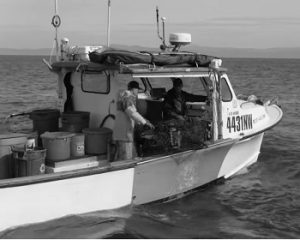
Big Wave Surfing and Commercial Fishing with Matt Becker
The talented crew over at 805 Beer have been releasing these high-quality mini-docs for a while now — spotlighting different occupations, exploring fringe cultures, and generally celebrating life. This time they’ve given us a glimpse into the lifestyle of second-generation California surfer/fisherman Matt Becker, who makes his money off commercial fishing, and feeds his soul off surfing spots like Maverick’s. It’s not a safe or soft routine, but it’s the only way Matt would want to live. Video, >click to watch< 18:44
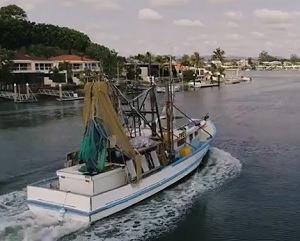
“They Go To Sea”: Local prawn fishermen highlighted in short film
A short film highlighting the life of Queensland’s hard working prawn fishermen has featured Grunske’s By The River owners and their passion for local seafood. Focusing on areas including Bundaberg and Hervey Bay to Townsville and the Gold Coast, the video titled “They Go To Sea” was posted recently by Australian Wild Prawns. Grunske’s By The River has been included in the short film with owner/skipper Paul Grunske stating the hard working fishermen and women he deals with every day was a big part of the success of his business. Video, >click to read< 09:23
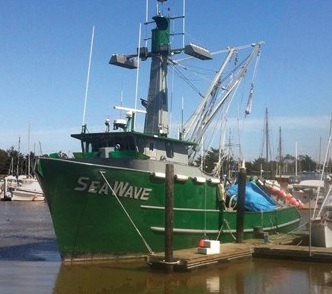
Marine Electronics: Time to work, sonar tells squid fishermen
We have a hundred times more efficiency using Wesmar sonar. Without it we wouldn’t go fishing. For sardines you have to have it. Sonar is the main thing for us. It tells us when to start work,’ said Anthony Russo, owner of two large purse seiners in the Monterey fleet. He owns two of the largest purse seiners in the fleet, 88-foot King Philip and 78-foot Sea Wave. He bought Sea Wave in 1989 and built King Philip in 1999. They are part of a 25-vessel fleet in Moss Landing, California that fish almost daily for squid, sardines, anchovy or mackerel. more, >click to read< 08:22
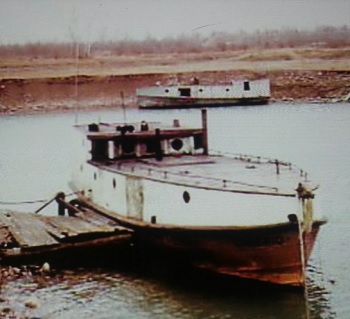
A February fishing adventure
Can you imagine spending 15 hours out on Lake Michigan on a day like today? Me neither. But many commercial fishermen here did just that in the mid-20th century, if they could maneuver through the ice floes. Tucked away in the archives of the Kenosha History Center is a letter written by Kenoshan LeRoy Nohling, dated Feb. 14, 1931. LeRoy, 24, related his experience of that week: “Nathan, my cousin, called up about midnight the night before to suggest that as long as neither of us were working, we might as well take a trip on one of the fishing boats here in the harbor. At six in the morning, we were down at the pier looking ‘em over.,, Off to the fishing grounds! >click to read< 19:32
1937 lake tragedy kills Kenoshans on the Marold II – This is the second part of a two-part series. Sunday’s first installment of this month’s Old Kenosha focused on the commercial fishing trade here in 1931 as told by a young man who joined the crew of the Marold II for a day. >click to read<
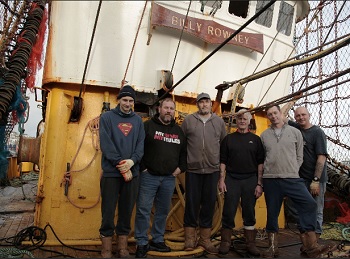
This Fishing Life – Six-part documentary gave viewers insight of the struggles facing the Cornish fishing industry
These are the faces of a new BBC Two documentary giving viewers an unprecedented look into the Cornish fishing industry. Cornwall: This Fishing Life was a six part series on BBC Two that finished earlier this week, which touched upon everything from Brexit to banning the sale of second homes. The first episode was focused on Mevagissey, one of the few remaining working fishing villages in the county, which has been tackling the issues posed by tourism. It was followed by a second part which focused on Newlyn and the community’s strong support for Brexit – with over 90% of the UK fishing industry voting to leave the European Union. This page has 38 great photos, >click to read, view< 18:50
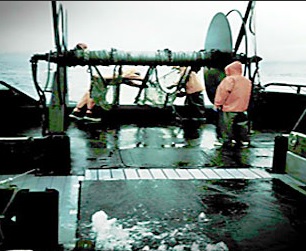
Alaska: Commercial fishing is a good investment
“This is probably not well-known,” said Sam Rabung, director of the commercial fisheries division for the Alaska Dept. of Fish and Game… Rabung pointed out that the commercial fishing industry is the largest private sector employer in Alaska, putting almost 60,000 people to work annually. “It contributes about $172 million directly in taxes, fees and self-assessments to state, local and federal governments, and contributes an annual average of about $5.6 billion in economic output to the Alaska economy,” >click to read< 20:32
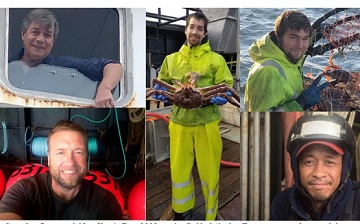
In Alaska, commercial fishing remains dangerous despite increased safety measures
Commercial fishing was once the most dangerous job in the country, (Scott Wilwert said, and during the 1970s and 1980s an increase in accidents and deaths ultimately led to the passage of the Commercial Fishing Industry Vessel Safety Act of 1988. The regulations required boats to have survival suits and life rafts and to carry out onboard safety drills, among other safety measures.,, “There was a time in the ’70s and ’80s where, I think, even the fishermen would tell you that there was a mentality, that ‘you have to go out but you don’t have to come back’ kind of thing,” Wilwert said. “That just doesn’t exist, nobody thinks that way anymore.” >click to read< 07:29
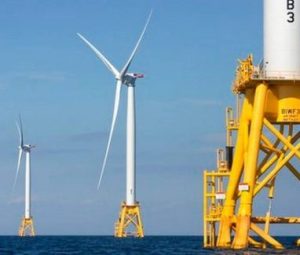
This Blows! Fishing industry raps proposed wind energy grid
“The proposed layout specifies that turbines will be spaced 1 nautical mile (nm) apart, arranged in east-west rows and north-south columns, with the rows and columns continuous across all New England lease areas.” But the claim that the newly proposed layout would satisfy the requests of the fishing industry did not entirely hold up once the developers’ plan was released publicly Tuesday morning. An organization that advocates on behalf of the scallop industry said its members were not consulted,,, >click to read< 19:41






